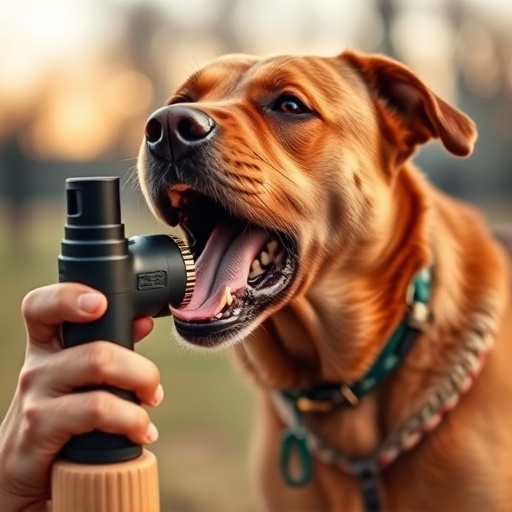Canine repellent spray, effective against dog encounters, comes in various formulas and sizes. Shelf life is influenced by temperature, moisture, and storage practices. To preserve potency, store pepper spray in a cool, dry place away from direct sunlight and extreme heat for a 2-3 year lifespan. Avoid car storage due to fluctuating temperatures; maintain in an airtight container out of reach of children and pets for optimal safety.
“Discover the power of protection with canine repellent spray, a versatile tool for keeping your space safe. This comprehensive guide explores the multifaceted world of pepper spray, focusing on its benefits and diverse types available. We delve into critical factors affecting the pepper spray shelf life in cars, offering valuable insights for optimal storage and longevity. Learn essential safety guidelines to ensure effective usage and peace of mind.”
- Understanding Canine Repellent Spray: Benefits and Types
- Factors Affecting Pepper Spray Shelf Life in Cars
- Safe Usage and Storage Guidelines for Longevity
Understanding Canine Repellent Spray: Benefits and Types
Canine repellent spray is a popular and effective tool for personal protection, especially when out on walks or in areas known for dog encounters. This type of spray is designed to deter dogs from approaching by irritating their senses, typically their eyes and nose. The key active ingredient in most canine repellents is capsaicin, the compound that gives chili peppers their heat.
There are various types available, each with unique features. Some sprays offer immediate protection upon application, while others have a longer-lasting effect. For instance, pepper spray shelf life in a car may differ from that used for outdoor activities due to varying concentrations and environmental factors. Additionally, spray canisters come in different sizes, from compact designs suitable for carrying in a pocket or purse to larger options for vehicles, ensuring you’re prepared for any canine encounter.
Factors Affecting Pepper Spray Shelf Life in Cars
The pepper spray shelf life in cars can be influenced by several factors, each playing a significant role in maintaining its effectiveness. Temperature is one of the primary considerations; extreme heat or cold can degrade the chemical composition of the spray over time. Car interiors, often confined spaces with limited ventilation, can act as small ovens during hot seasons, accelerating the deterioration process. Conversely, freezing temperatures during winter can also cause pepper spray to lose potency faster than expected.
Moisture is another critical factor affecting shelf life; high humidity levels inside a vehicle, especially in regions with subtropical climates, can lead to premature spoilage. Pepper spray is designed to be moisture-sensitive, and even small amounts of condensation on the nozzle or inside the container can significantly impact its performance. Additionally, improper storage practices, such as leaving the spray exposed to direct sunlight or not securing it properly, can expose it to environmental contaminants, further reducing its useful life.
Safe Usage and Storage Guidelines for Longevity
When using canine repellent spray, safety is paramount. Always follow the manufacturer’s instructions for application and ensure it is stored correctly to maintain its effectiveness. Pepper spray designed for personal protection has a specific shelf life, typically around 2-3 years, especially when kept in ideal conditions—a cool, dry place away from direct sunlight or extreme heat. Storing it in your car, especially in the glove compartment, can accelerate degradation due to fluctuating temperatures. To maximize longevity, consider keeping it in an airtight container and storing it out of reach of children and pets. Regularly inspect the spray for any signs of damage, corrosion, or leakage, which could indicate reduced potency.
Proper storage is key to preserving the pepper spray’s potency. Avoid leaving it unattended in places exposed to high temperatures, such as a hot car interior during summer months. Extreme conditions can cause the chemical composition to alter, reducing its capability to deter dogs and other animals effectively. Regular maintenance includes keeping the spray mechanism clean and ensuring the nozzle remains sealed when not in use. This simple care can extend the pepper spray’s shelf life, guaranteeing its reliability when you need it most for personal protection or to repel unwanted canine encounters.
Canine repellent spray, especially when properly stored, offers significant protection against dog encounters in your car. Understanding its benefits, selecting the right type, and adhering to safe usage guidelines are key to maximizing its shelf life, particularly in vehicular environments. Remember that regular maintenance and knowledge of the pepper spray’s expiration date, especially for those kept in cars, can ensure its effectiveness when you need it most.
